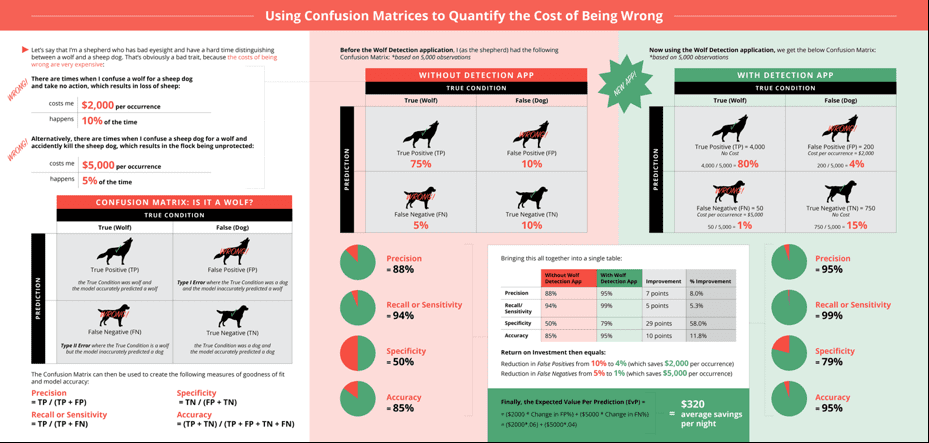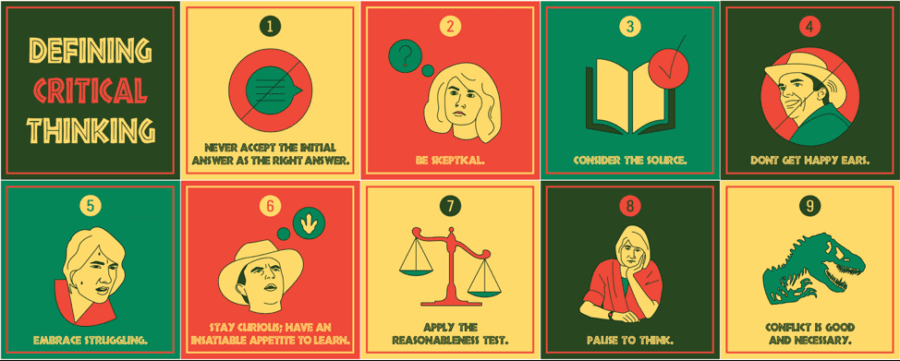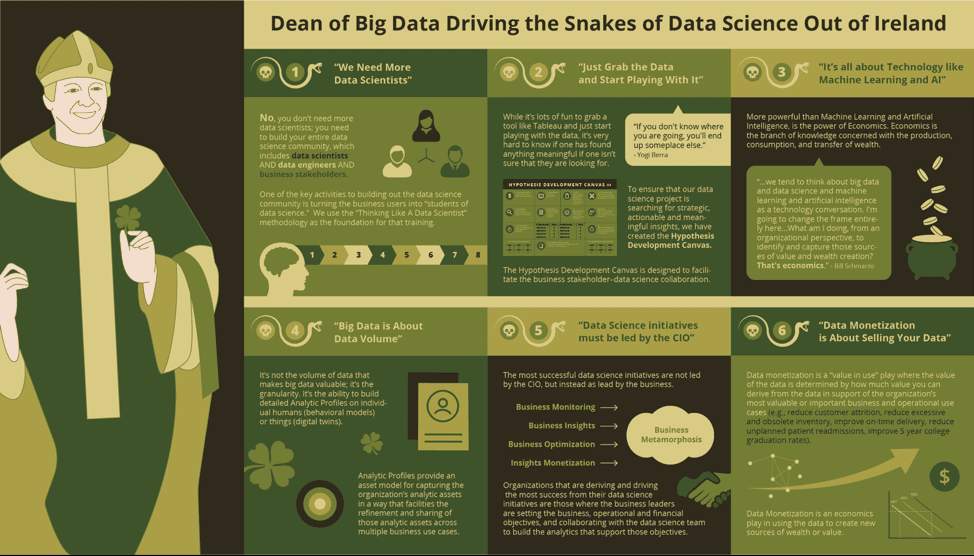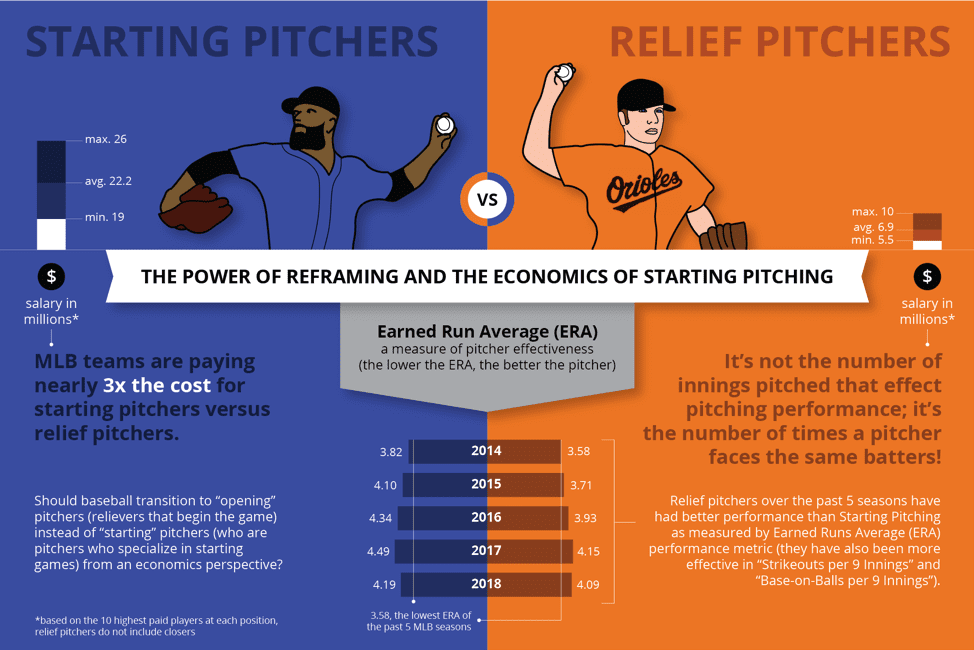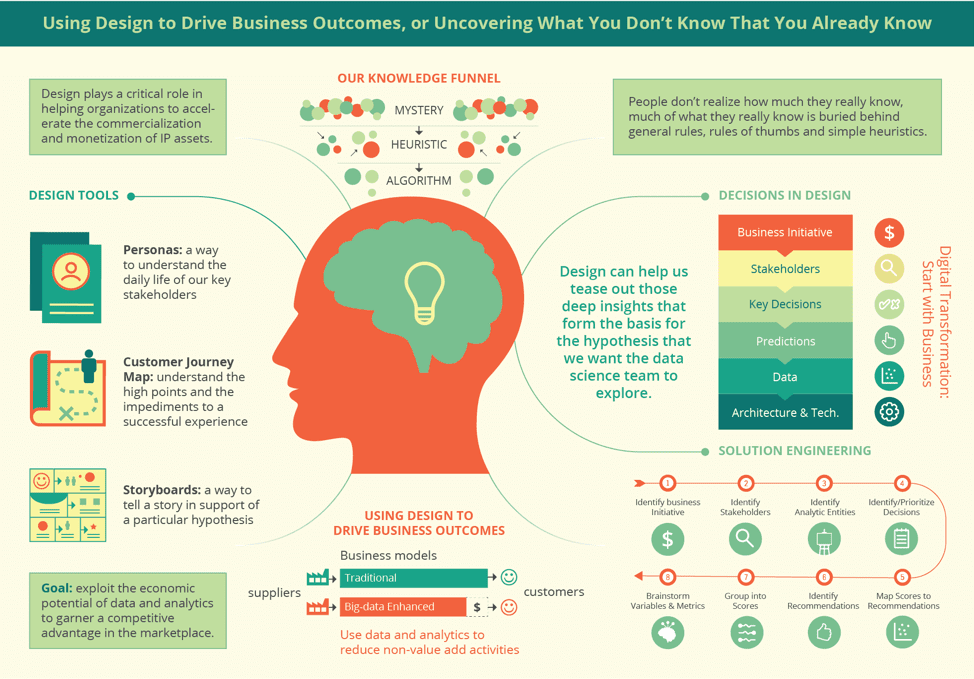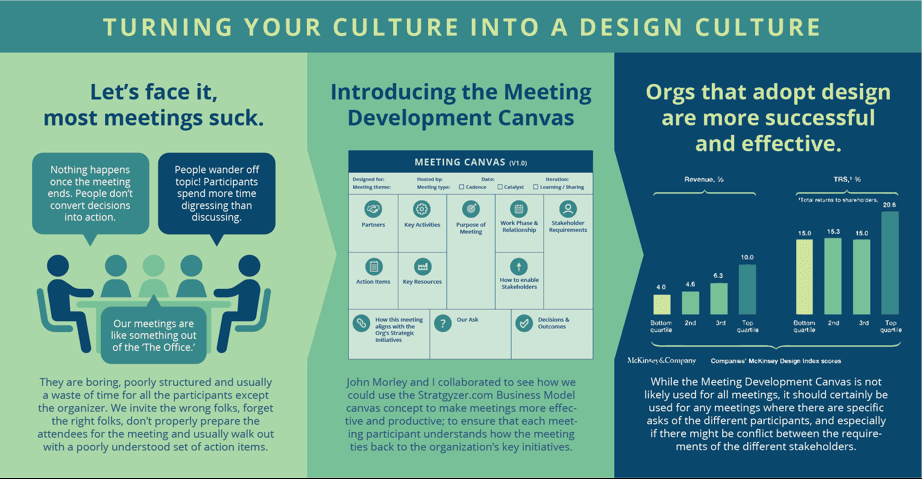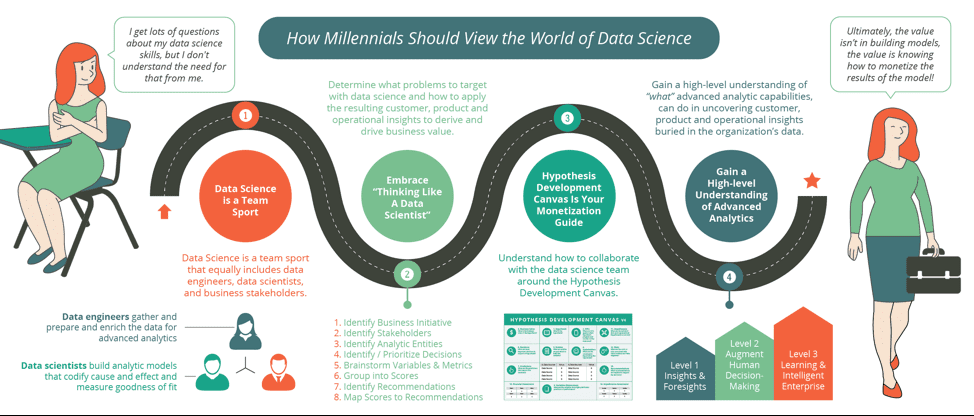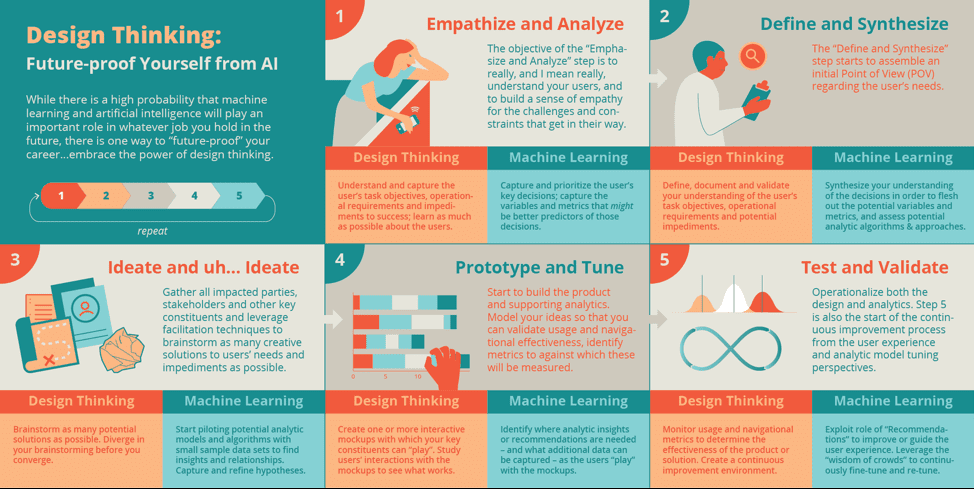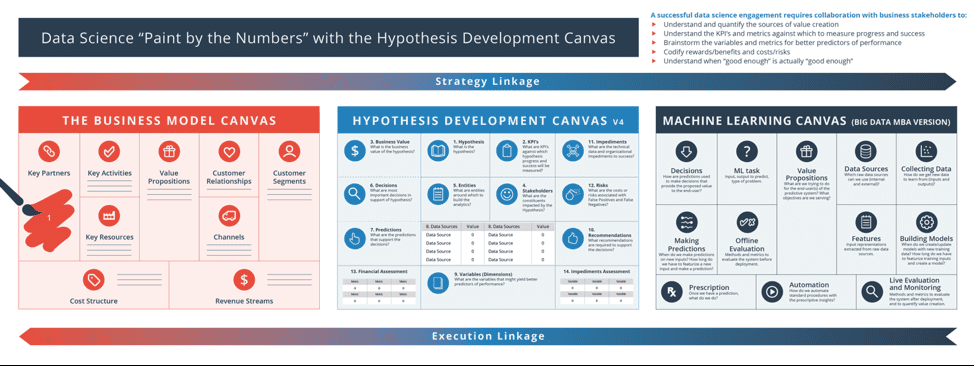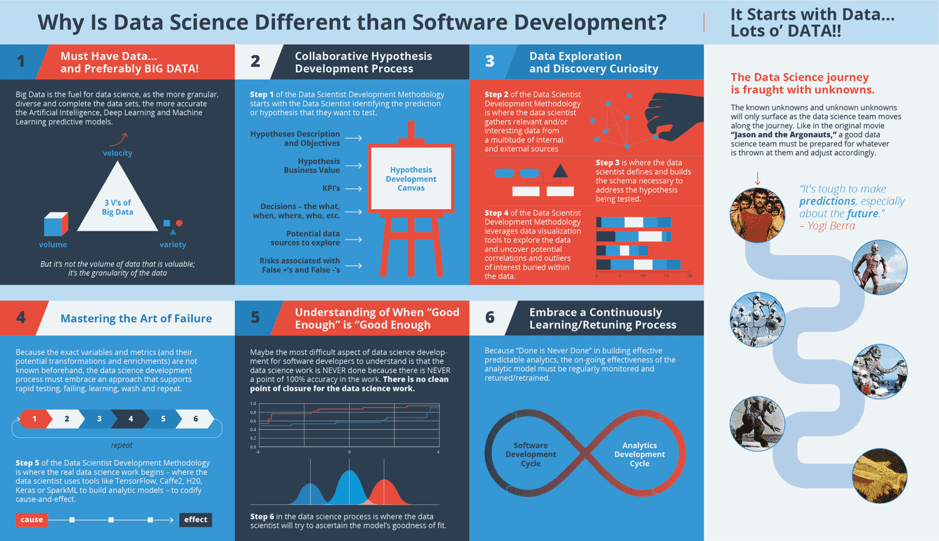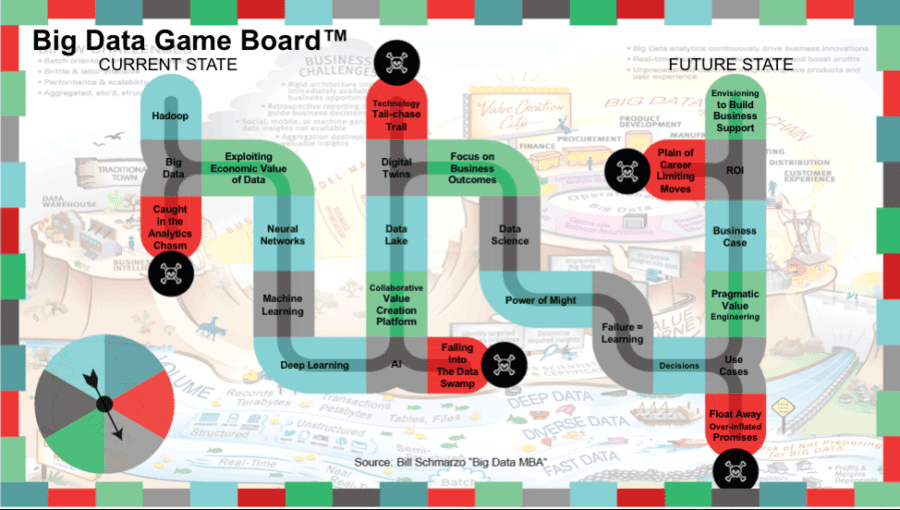My last University of San Francisco School of Management class of the semester is coming up this week. However instead of a normally boring presentation from me to cap the semester, we are going to review a few infographics to summarize our lessons from the semester.
I also want to use this blog to give credit to Arielle Winchester for her creativity and patience to work with me in the construction of these infographics. Here are my Top 10 infographics from 2018! I think they are damn good!
#10-Tied) Using Confusion Matrices to Quantify the Cost of Being Wrong
Not all modeling errors are of equal value. One needs to invest the time to understand the costs of Type I and Type II errors in relationship to your use case. The challenge is determining whether the improvement in performance from the analytic model is “good enough.” The Confusion Matrix can help us make that determination.
#10-Tied) Critical Thinking and Becoming ‘Students of Data Science’
Social media and internet search scare me because it is so easy to acquire information without also acquiring the associated knowledge. It’s easy to find almost any information, but an effective “student of data scientist” must learn to discern easily acquired information with a sense of skepticism.
#9) Driving the Snakes of Data Science Out of Ireland
I presented at the Analytics Institute of Ireland event, and couldn’t help thinking of Saint Patrick driving the snakes out of Ireland. So here is how I would approach driving the data science snakesout of Ireland.
#8) Power of Reframing and the Economics of Starting Pitchers
Economics is the branch of knowledge concerned with the production, consumption, and transfer of wealth or value. And sometimes one needs to reframe the conversation in order to uncover new sources of wealth and value creation. The economics of starting pitchers versus relief pitchers, combined with performance numbers, indicate that maybe it’s the next key transformation in the sabermetrics dominated world of Major League Baseball.
#7) Using Design to Drive Business Outcomes
The secret to moving organizations from heuristics to algorithms lies in the ability of design to uncover and codify the deep knowledge and insights of the organization’s subject matter experts. So how do organizations help their subject matter experts uncover the knowledge they don’t realize they have; in addition to uncovering those deep business and operational insights that get buried underneath heuristics and rules of thumbs?
#6) Turning Your Culture into a Design Culture
I have something bigger in mind for Design Thinking other than just product design. Instead of just using design to build customer-centric products and services, how about using it to create a customer-centric mindset to enable an organization’s digital transformation?
#5) How Millennials Should View the World of Data Science
Many of my MBA students are perplexed about how much data science capabilities and skills they need to get hired. It appears that in many job interviews, employers are looking for students who have both subject matter as well as data science expertise. Here is what we are teaching my MBA students to prepare themselves for the world of Data Science.
#4) Design Thinking: Future-proof Yourself from AI
Design thinking is defined as human-centric design that builds upon the deep understanding of our users in order to generate ideas, build prototypes, share what you’ve made, embrace the art of failure and eventually put your innovative solution out into the world. And fortunately for us humans, there is a tight correlation between design thinking and machine learning.
#3) Data Science ‘Paint by Numbers’
The design world is applying the “Paint by the Numbers” concept using design canvases. A design canvas outlines what’s important given the subject area, and then allows the “painter” to “color” in the right information. Here’s an example applied to the world of data science.
#2) Why Is Data Science Different than Software Development
Data science development is different from software development, and getting the two to mesh is like trying to cobble together Tinker Toys with Lincoln Logs. Methodologies and processes that support successful software development do not work for data science projects according to this simple observation:
Software development defines the requirements for success; Data Science discovers them in the data.
#1) The Big Data Game Board™
Move aside “Monopoly,” “Risk,” and “Snail Race!” Time to teach the youth of the world an important, career-advancing game: how to leverage data and analytics to change your life!
Introducing the “Big Data Game Board™”!
This is my favorite infographic. Pull the family together this holiday season and play your way into becoming a Big Data expert!
So what should you expect in 2019? I will be expanding the use of infographics to reinforce and clarify the materials that I am teaching with respect to Big Data, Data Science, Machine Learning, Artificial Intelligence, Data Monetization and Digital Transformation (and expect a few that cover the essentials of Design Thinking, Economics and Critical Thinking).

